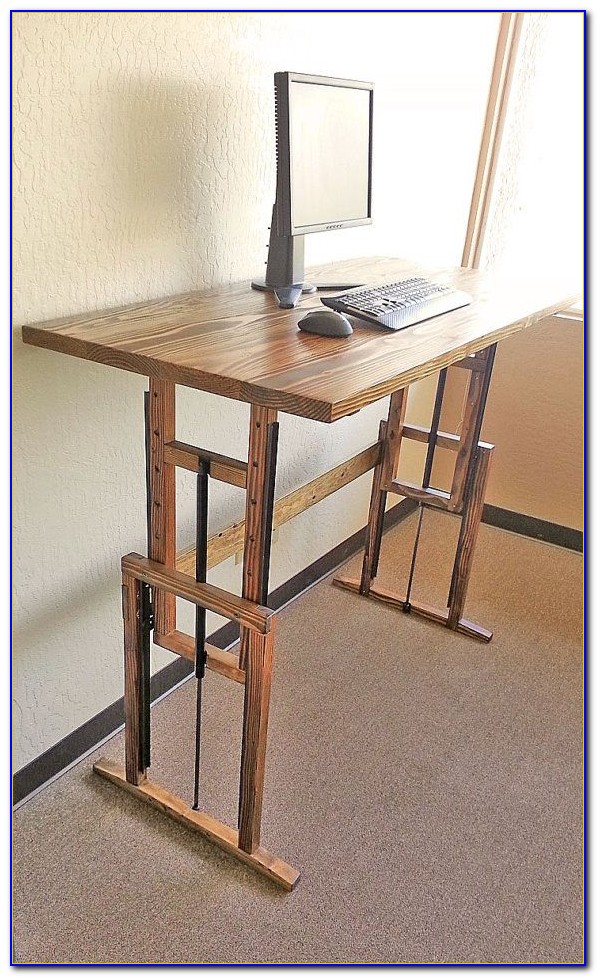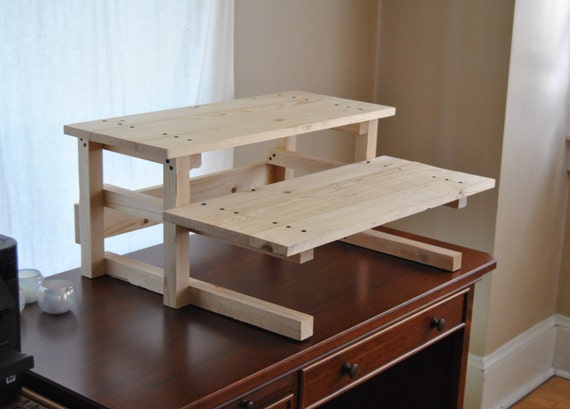
DIY WOOD STANDING DESK CONVERTER MANUAL
This matters to a lesser extent for the manual two-tier models and single-column models, whose size and weight make stashing them a challenge.
DIY WOOD STANDING DESK CONVERTER FULL
The full standing desks we test are 30 inches deep, and any converter that comes too close to that (or goes over) is not useful to most people. Desk depth: We look for converters that can fit a 30-inch-deep desk, since that’s the size of typical desks.That doesn’t seem like much, but some people may not be able to raise their chair to meet that height while still keeping their feet flat on the floor, as ergonomic experts recommend. A thick converter work surface may raise your typing surface more than 2 inches off the desk you are using. Minimum height: This measurement, which refers to how far the converter unit raises your work surface over the original height of a desk or table, is a major consideration.We dismiss models that fall notably short of this goal, with the exception of the inherently compromised laptop risers. Most full-size desks we’ve recommended accommodate people with heights up to 6-foot-2, give or take an inch or two. Maximum height: A converter should accommodate as many human heights as possible.

We prefer flat rectangular surfaces over those with unnecessary cutouts that waste space.

In either case, we consider whether it would be aggravating to have to make that move multiple times per day. (For reference, in our latest round of testing, our tester was a 5-foot-2, 130-pound writer who doesn’t do a lot of strength training.) For electric models, we consider how long a desk takes to move and how difficult it is for us to make fine adjustments.


You should be able to lock your work surface at just the right height instead of having to settle for a small number of preset heights that might not be appropriate for you.


 0 kommentar(er)
0 kommentar(er)
